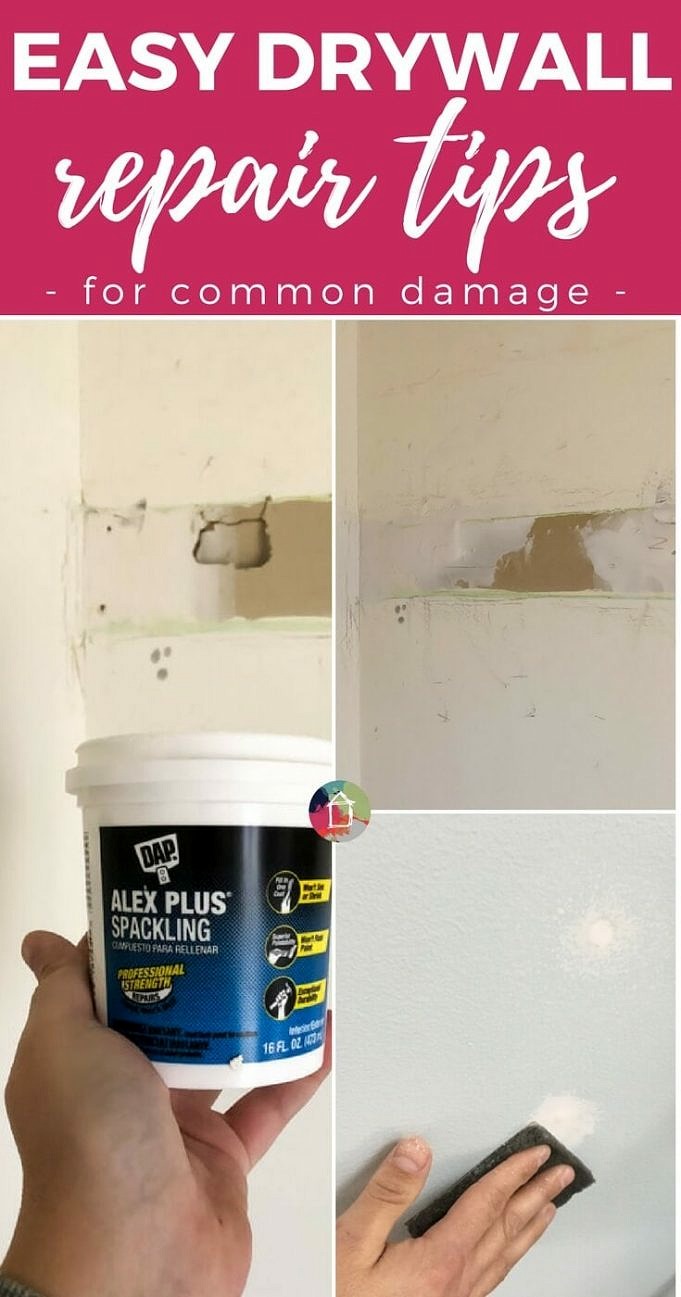Home-ownership is not without its challenges. These imperfections and holes can be easily fixed with a good putty knife or quality spackle.
No matter how large the hole is, or how small the chip in the paint is, the only thing that will determine the way you approach drywall repair projects is its size. We will break it down into small, medium and large repairs in this article.
Fixing Small Holes
Anything that is small or difficult to access would be considered a minor repair. One common example is to plug up any screw holes or anchors in the drywall, where a TV or shelf might have been mounted.
You will only need spackle and a knife to make these repairs. Clean up the damaged area and use a 100-150grit sandpaper to lightly sand it.
The next step is to apply the spackle evenly onto the area and then smooth it out with the putty knives. Patience is the key to a good job. It is important to apply at least three layers to your spackle. This requires that you wait for each layer to dry before applying the next.
Allow the first layer to dry before you try to plug the hole. Do not try to finish the job by applying just one coat of spackle. The hole will be filled once the first layer has dried, but there will still be some indentation. Continue to add layers of spackle, and then feather the putty knife over the indentation until it is completely smooth and flush with your surrounding wall.
Don’t be intimidated if you have never used a putty knives. You are not painting a watercolor. Take a firm grip on the knife and spread the putty. Make sure the knife’s edge is flush against the wall.
After the last layer of spackle is dry, sand it with 180-grit sandpaper.
Fixing Medium-sized Holes
A medium-sized hole is one that measures approximately 10 cm in diameter and about the same size as your fingertip. The all-too-common hole in the doorknob is a good example of this size repair.
A patch is required for these repairs. The best choice is to use adhesive, aluminum mesh patch kit. These kits are easy to use and come in many sizes.
Before you start your repair, clean up any small holes. To ensure the adhesive patch sticks to the wall, smoothen any rough edges and lightly sand with 120 grit sandpaper.
Once you have prepared the patch, peel off the adhesive and stick it over the hole. Then, smooth the patch onto the wall. This video demonstrates how simple it is to use these patch kit.
After the patch has been applied, you can start to apply your spackle. To ensure the best results, use your putty knives with care. For best results, you will need to apply multiple coats. After the final coat is applied, sand any spackled areas with 180 grit sandpaper. Finally, apply primer and paint.
Fixing Large Holes
You will need to remove large areas with a sheetrock saw or a utility knife. Then, plug it with new drywall.
Let’s say you have a hole approximately 13 cm in length and 8 cm wide in your wall. You can mark the area with a ruler or a pencil. Then use your utility knife to remove the area.
After the area has been cut, you will need to cut new drywall to fill in the gap. The new piece will be larger than the hole in the wall. Let’s say that you create a rectangle measuring 15 cm x 10cm around the wall. To use as a patch, measure and cut a 20 cm x15 cm piece of newdrywall.
Once you have cut the new piece, measure and mark a rectangle measuring 15 cm x 10cm inside. This is the most important part. Now comes the important part.
Also, you will need a rectangle 15 cm by 10 cm on your wall and a piece 15 cmx10 cm of new drywall, with 5 cm excess paper sticking out of each side. This excess paper can be used as tape to secure the patch when it is inserted into the wall.
To ensure adhesion to your wall, spackle both sides of the patch before you place it. After the patch has been taped in place, you can continue to spackle the area until it is flush with the wall. This video shows the entire process in action.
Before you paint, lightly sand the area with 180 grit sandpaper.



